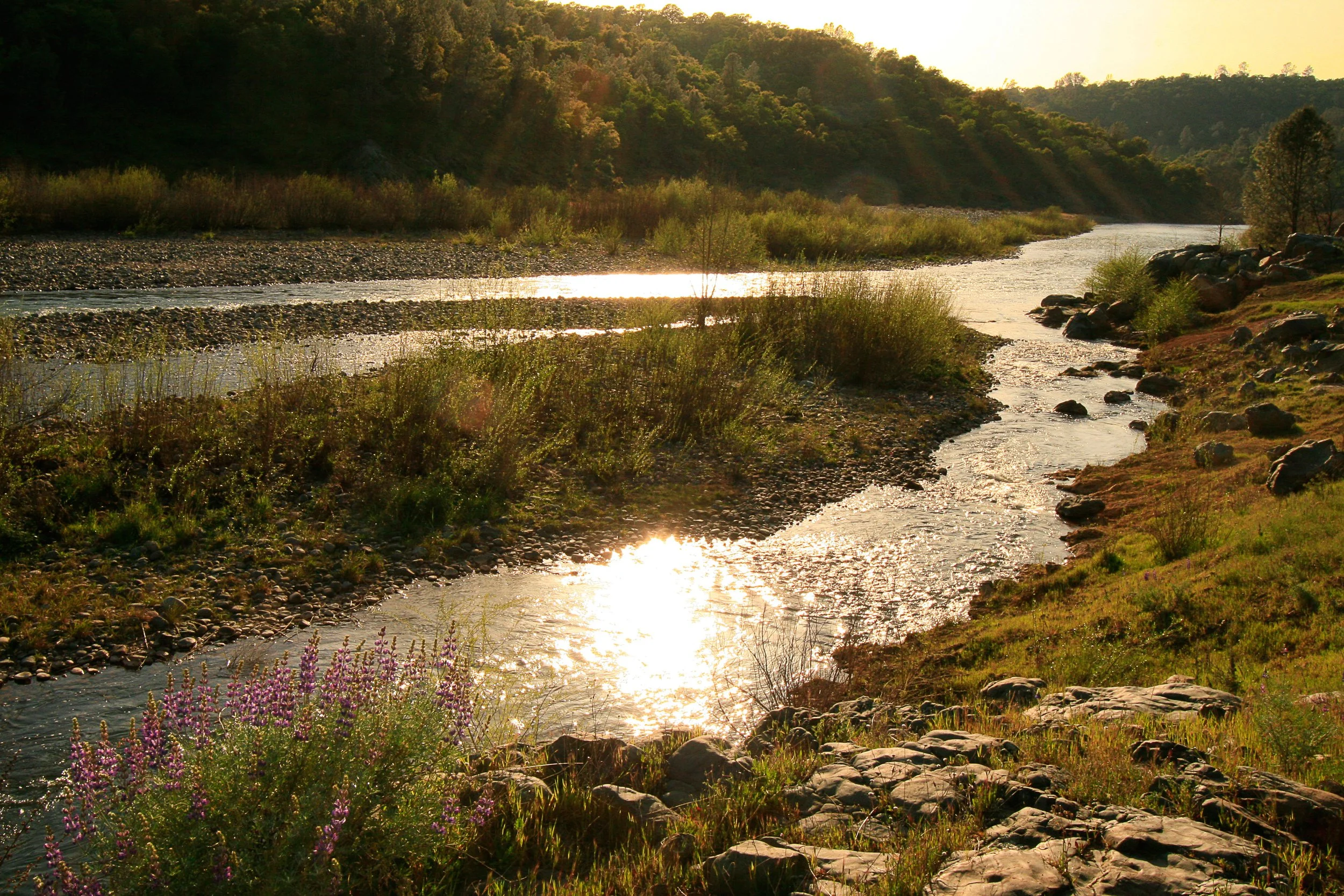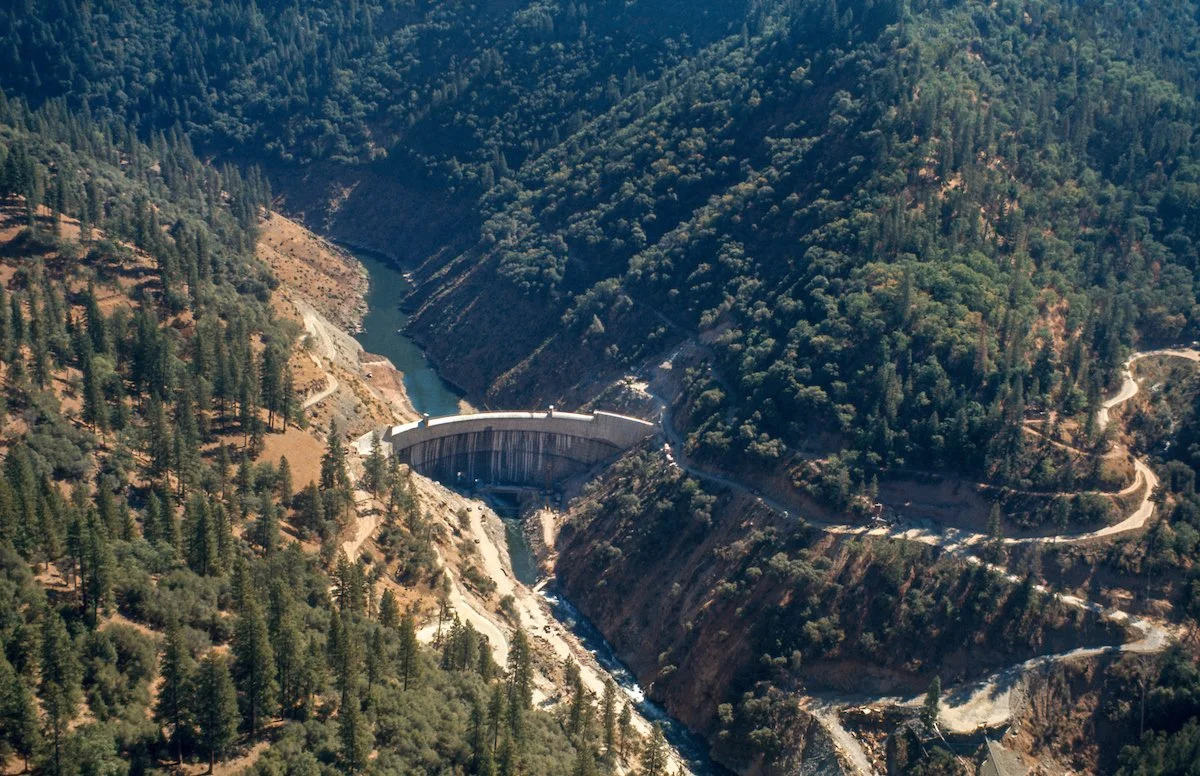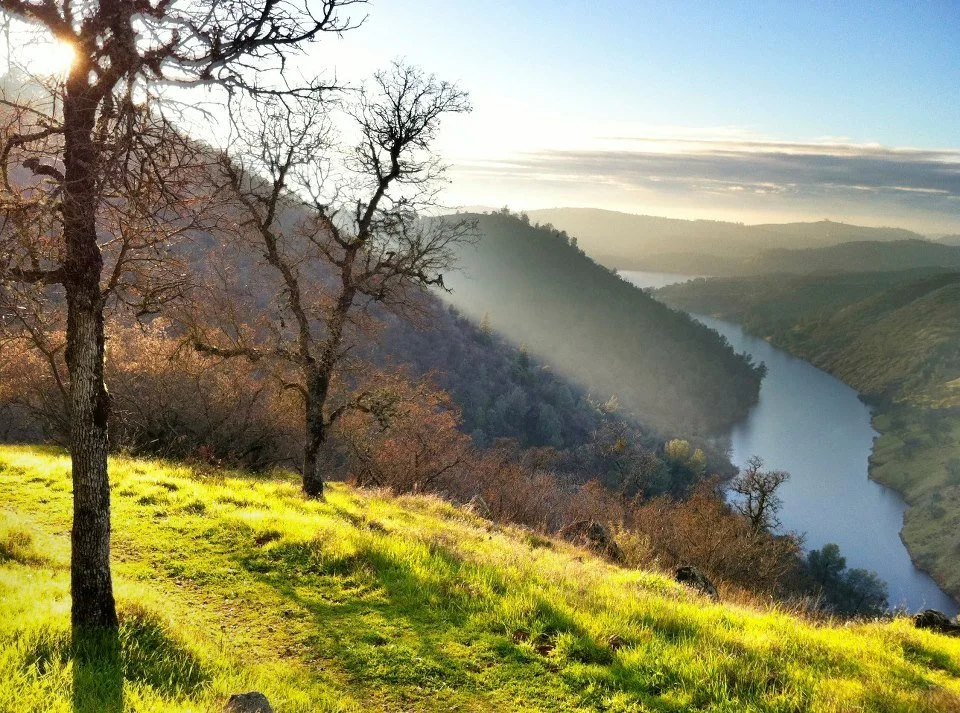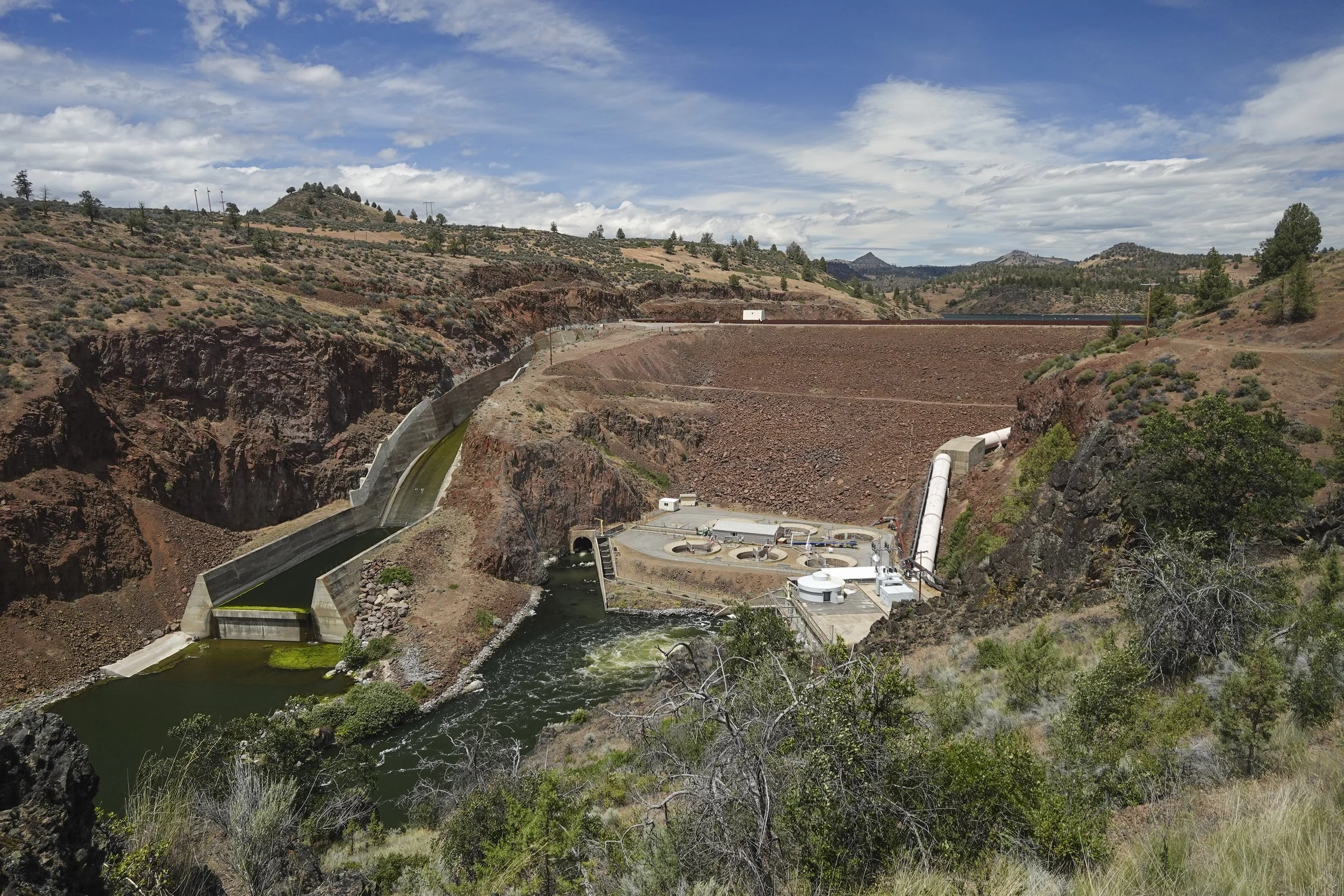River Round Up
Sacramento River. Credit: Steve Evans
From the Sierra Nevada to the Pacific, California’s rivers are on the move, shaping ecosystems and communities alike. This round up of river news will take you on a journey through these dynamic waters, bringing you the latest updates from across the state.
Sacramento River
Sites Reservoir
The water rights hearings for the proposed Sites Reservoir are in full swing. The “case-in-chief” portion of the hearings will conclude on November 4. The next phase of the hearing (“rebuttal”) is scheduled to begin on January 14. The State Water Resources Control Board will ultimately use the evidence presented in these hearings to decide whether to grant the proposed reservoir a water right.
Three critical takeaways from the hearings so far:
Project proponents used outdated modeling to estimate how much water would be available for the project to take from the Sacramento River. They used the CalSim II model rather than the best available science, which is CalSim III. CalSim II does not include water years since 2003. Excluding this essential dataset limits the public’s ability to understand the impacts of this water project under realistic climate change scenarios.
Project proponents are not proposing minimum flow conditions in their water right (i.e. the minimum flow that must be present before Sites can take water). Instead, they are proposing minimum flow conditions from other permits (e.g. CESA) to be incorporated into their water right. This is an attempt to evade consideration of Sites-specific impacts (pun intended) on the environment and the people who rely on a healthy ecosystem. Flow-related impacts should be avoided or mitigated through water right terms, in addition to complying with more general baseline protections.
Sites’ own greenhouse gas witnesses confirmed that six sources of emissions were excluded from the estimate of project emissions, and agreed that exclusion of emissions pathways would result in an undercount of total greenhouse gas emissions from the project.
Friends of the River and our partners put on a strong case-in-chief presentation of expert witnesses. Click here for a breakdown of all the topics we covered and why they matter.
Fall-run Chinook Salmon Update
Fall-run Chinook salmon returns are historically low on the upper Sacramento River. As of October 19, only 1.68 million eggs have been harvested at Coleman National Fish Hatchery. While this might sound like a lot, it’s only 8.4% of the 20 million harvested during an average spawning season. Fall-run, which are the main sub-population supporting commercial salmon fishing in California, have been critically low for several years now as a result of hostile water management decisions.
Read more from journalist Dan Bacher.
Damage from the 2017 Oroville Spillway Incident. Credit: CA Dept. of Water Resources
Feather River
Safety Issues Remain at Oroville Dam
Last week was California Flood Preparedness Week – which means there’s no better time to remind the public that there are ongoing flood control concerns at Oroville Dam. Here are two of the major problems:
The spillways are 120,000 cfs short of capacity to release the standard regulatory hypothetical flood that spillways are supposed to be able to handle.
Big chunks of the hillside below the auxiliary spillway will be torn off the hillside and clog the channel below if that spillway is used. This could result in damage to the powerhouse, and DWR itself concedes that operations of the State Water Project (a major source of water for Southern California) could be seriously damaged for as long as five years.
FOR’s Ron Stork warned federal regulators as long ago as 2005 (link) that Oroville Dam, the nation’s tallest dam, was at risk of disaster. His prediction came true in 2017 (link).
Spring lupine on the Lower Yuba River. Credit: FOR Photo Contest Archives
Yuba/Bear River
Stop Centennial Dam art by Jen Rain, commissioned by South yuba River Citizens League, 2017.
Ding, Dong, Centennial Dam is Dead
Centennial Dam is officially dead (Alexa, play “For Whom the Bell Tolls” by Metallica). FOR is deeply grateful to all those who worked vigorously on this campaign for nearly a decade to reach this milestone. Thanks are especially in order for Traci Sheehan (now at South Yuba River Citizens League) and Ashley Overhouse (now an FOR Board Member), who both fearlessly coordinated the Dam Watchdogs advocacy group in opposition to the Dam. Additional thanks are owed to Chris Shutes of California Sportfishing Protection Alliance; Otis Wollan and Dianna Suarez of Friends of Bear River; Allan Eberhardt and Jonas Minton (in memoriam); Shelly Covert of the Nevada City Rancheria (Nisenan Tribe), and the Colfax-Todds Valley Consolidated Tribe of the Colfax Rancheria (Miwok, Maidu, Nisenan).
Yuba Water Agency Seeks to Extend Right to Sell Water for Profit for 25 Years
YWA has petitioned the State Water Board to extend its existing water right to annually export up to 200,000 acre-feet of water from the Yuba River for 25 years – through 2050. The Yuba Water Transfer Program was established as part of the Yuba Accord (2008), a set of actions that also included a negotiated agreement on river flows between YWA and environmental and fishing groups with the purpose of restoring salmon and steelhead in the Yuba River. Unfortunately, salmonid populations have continued to decline since implementation of the Accord began in 2009. In recent years, the population has been as low as 1% of historic population estimates. This is, in part, due to the fact that YWA stores water in the spring to allow late summer water exports, depriving Spring-run Chinook and other salmonids of needed cold spring flows.
Friends of the River, alongside our partners, filed a formal water rights protest in response to YWA’s petition. Some key points from our water rights protest:
Water transfers harm ecosystems and endangered species, especially during dry years, and those flows are needed in the Bay-Delta ecosystem during spring,
Prioritizing profit from water sales is against the public trust (see next section for more on this topic),
The maximum annual export volume should be capped at 100,000 acre-feet.
Yuba Water Agency Requests Yet ANOTHER Pass on Environmental Flows
Yuba Water Agency serially attempts to circumvent flow requirements on the Yuba River, and is often successful at doing so within the current regulatory framework. YWA’s federal hydropower license for its Yuba River Development Project requires a pulse flow from January 1-15 to attract migrating steelhead into the Yuba River. However, YWA frequently seeks a “Temporary Variance” from federal regulators to forego the pulse flow and save approximately 13,000 acre-feet of water in the process (compared to its 966,000 acre-feet storage capacity at New Bullards Bar Reservoir).
YWA sought and received similar flow variances in fiscal years 2005, 2008, 2009, 2010, 2012, 2014, 2016, 2017, and 2022, 2023, and now 2025). In some of these same fiscal years that YWA claimed it didn’t have enough water to release a 15-day pulse flow, YWA appears to have profited greatly from water sales, exceeding $51 million as recently as 2022 (Figure 1).
YWA and regulators call this a Temporary Variance. Others might say this is profiteering from water that was sold at the expense of public trust resources.
Figure 1. YWA Revenue from Water Sales 2010-2022.*,** Values in red represent the profit from water sales that occurred in the fiscal year in which a variance was granted.
*Data from Yuba Water Agency’s financial statements, found here: https://www.yubawater.org/Archive.aspx?AMID=36.
**Data from fiscal years not relevant to FERC flow variances in grey, but remains for comparative purposes.
State Water Board Sets Aside Clean Water Act Certification for Major Yuba River Hydropower Project
On September 18 the State Water Board “set aside” the Clean Water Act water quality certification for the Yuba River Development Project (hydropower). Several years ago, Yuba Water Agency (YWA) sued to diminish the State’s authority to protect its waters. It lost the case, but that loss was not final until the U.S. Supreme Court rejected its petition to hear the case. This recent move by the State Water Board is merely procedural – clearing the slate for an updated water quality certification.
American River
The 250 feet tall Slab Creek Dam, part of SMUD’s Upper American River Hydroelectric Project. Credit: CA Dept. of Water Resources.
When SMUD’s main hydropower project (the Upper American River Project) was relicensed, one negotiated outcome was the Draft Slab Creek Whitewater Boating Recreation Management Plan. To ensure proper implementation, Friends of the River, American Whitewater and other organizations have raised the following concerns regarding safety and capacity issues that could lead to on-river congestion, with bottlenecks at difficult rapids, increasing the risk of accidents. Our recommendations include incorporating on-river safety metrics, lowering the daily launch threshold, improving parking and take-out access at critical location, and installing safety signage and rescue equipment at key points along the river. Improved monitoring of congestion and parking, along with a forward-thinking approach to managing increased future use, will be essential for the success of the Plan.
Mokelumne River
Mokelumne River flowing into the Pardee Reservoir. FOR Archives.
GreenGen has submitted a Draft License Application for its proposed Mokelumne Pumped Storage Project (hydropower). The “GreenGen Project” is a proposed pumped storage hydropower project that would be located on the Upper Mokelumne River. If built, it will pump water from a lower elevation reservoir (Salt Springs) up to a higher elevation reservoir (Lower Bear River) when electric generation production exceeds customer demand. Then it will deliver water from high to low and generate electricity when demand and prices are high, typically 5-9 P.M.
The GreenGen Project has too many potential adverse environmental impacts, including reduced water quality, impacts to recreation, listed wildlife species, wildfire risk, and impacts to a Wild and Scenic River, to be considered a sustainable source of renewable energy.
FOR plans to submit comments on the Draft License Application and participate in the licensing process. Stay tuned!
The Tuolumne River near it’s headwaters in Yosemite National Park. Credit: FOR Photo Contest Archives.
Tuolumne River
Turlock Irrigation District Moves to Skimp on Required Environmental Analyses
A coalition of conservation groups, including FOR and the Tuolumne River Trust (TRT), had a lot to say earlier this month on “Turlock Irrigation District’s (TID) Notice of Intent to Rely on FERC’s Final Environmental Impact Statement (FEIS), With Mandatory Conditions, In Combination with a Supplemental Analysis, to Satisfy the California Environmental Quality Act for the Relicensing of the Don Pedro Hydroelectric Project and an Original License for the La Grange Hydroelectric Project”:
Instead of relying on incomplete and outdated federal documents issued to comply with the National Environmental Policy Act, a new environmental document and associated analyses are necessary to comply with (the California Environmental Quality Act (CEQA)), support the State Water Board’s water quality certification for the project, and to address Clean Water Act legal standards and requirements
Under CEQA, the analyses must show how significant project impacts will be avoided or mitigated, and new information since the 2020 release of the NEPA document must be considered, including conformity with the new Biological Goals outlined in the Phase 1 update of the Bay-Delta Water Quality Control Plan, which prescribes water quality regulations in the San Francisco Bay-Delta.
Conservation Groups Organize Around Instream Flows on the Tuolumne
The Hetch Hetchy Reach, a 12-mile stretch of the Tuolumne just downstream of Hetch Hetchy Reservoir, is the focus of a new advocacy campaign by FOR, the Tuolumne River Trust, and others. In 1987, the Kirkwood Agreement—named after the Kirkwood Powerhouse downstream of Hetch Hetchy – required the San Francisco Public Utilities Commission to conduct a fish study to identify how San Francisco might improve river flows along this stretch of the Tuolumne River—an agreement that is unfulfilled to this day, thirty-seven years later.
Read more from Tuolumne River Trust
Activists on the San Joaquin River Gorge Bridge. Credit: FOR Archives
San Joaquin River
Public Safety Changes Needed in Federal License for Kerckhoff Hydroelectric Project
This month, state and federal agencies mandated new safety and environmental requirements for PG&E’s Kerckhoff Hydroelectric Project on the San Joaquin River. The current regulatory framework allows PG&E to make dangerous and erratic releases of water from Kerckhoff Dam, which can take the river from a gentle trickle to flood flows in a matter of minutes. In some cases, river levels can rise over five feet almost instantaneously. These flows have real consequences – in 2018 a group of teenagers were swept away by a sudden release, resulting in the death of an 18-year old, who drowned after heroically rescuing a fellow hiker.
The requirements mandated by the state and federal agencies would limit the rise of water to no more than one foot per hour below Kerckhoff Dam. This is a standard requirement at hydropower projects around the country. However, these requirements will not go into effect until federal regulators issue a new hydropower license for the project, which can take several years.
This is why FOR and partners, led by American Whitewater, made a formal motion to intervene in the licensing process. This will give us a voice in the process to push for improved public safety and environmental outcomes.
Read more about the relicensing and public safety concerns.
Before and after the removal of Iron Gate Dam on the Klamath River. Credit: Swiftwater Films
Klamath River
(Un)Build it, and They Will Come
The largest dam removal project in American history was completed this month on the Klamath River. Deconstruction of the dams began last year, but this major achievement comes after decades of advocacy by the Hoopa and Yurok Tribes. The dam removal not only opened up access to 400 miles of upstream habitat for salmon, but also restored an essential mainstay of indigenous food and culture. Since the removal, salmon have already migrated up the Klamath River into Oregon.
For more, please read:











